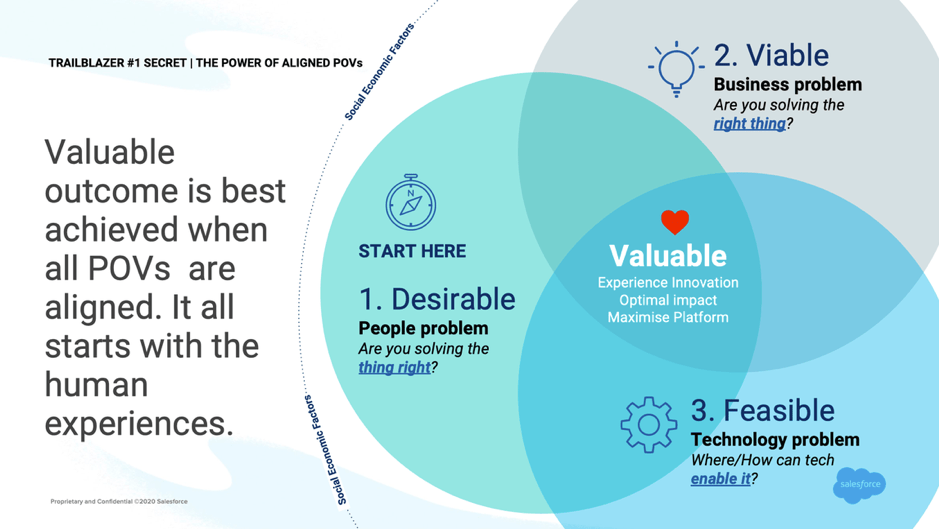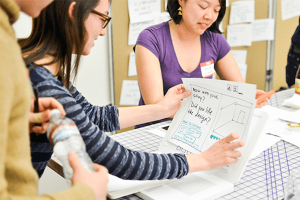Before we begin, I want to give a shout-out to my (virtual!) collaborators Katie Li and Ludovic Leraistre who co-authored this with me.
In the age of the customer, businesses are increasingly driving up their expectations for compelling customer experiences. They are increasingly making key decisions based on this factor, because it’s become clearer that if companies want to drive customer advocacy, win new customers, and deliver with agility and intelligence – then compelling experiences should be a priority.
So, what does this all mean? How can we make this happen, especially in the throes of a global pandemic and other related major crises?
Many companies are undergoing digital transformation challenges – they understand the potential outcome it can bring across their ecosystem. In 2019, McKinsey reported that up to 70% of Change programs failed to achieve their goals due to lack of executive sponsorship and change resistance. It has left companies with large costs due to failed IT programs and business spending.
McKinsey also reported that companies saw a 30% increase in change stickiness when people are invested. What are those companies doing differently?
If we use a tree analogy, most people would see and only draw the top half of a tree – this is the area where stakeholders and executive leaders tend to focus their efforts.
However, rooted deep ‘below ground’ are the underlying intangible factors (e.g. behaviours, mindsets, emotions, assumptions, values and culture) that affect how we adapt to change and embrace new ways of working to achieve success. Clearly, we must consider both tangible and intangible factors in any transformation.

In order to stay relevant, technology alone would only solve SOME aspects of your challenges but not all. To accomplish digital outcomes, it requires a different approach, and mindset change to shift behaviours.
Having worked with various customers over the past 60+ years combined, it is always fascinating to observe this fundamental differentiator – those with a legacy mindset versus those with a growth mindset. The latter tend to build customer-centric ecosystems where executives are just as invested as individual contributors to differentiate. Obviously, mindset is key, and it’s the heart of our first top Trailblazer secret.
Trailblazer Secret No. 1 – The Power of Aligned Points of View

Valuable outcomes are best achieved when we can align from 3 perspectives:
- By starting with the human experience, we can ask the question “Are we solving the thing right?”
- From a business perspective, we ask the question “Are we doing the right thing?”
- For the platform, we ask the question “How do we scale technology to do more?”
The surrounding external social economic factors also prompt the question “Do understand the holistic view of both internal and external impact?“ This is critical to drive value and guide the right outcomes.
Trailblazer Secret No. 2 – Human-Centred Design
Recalling Steve Jobs’s famous quote: “You’ve got to start with the customer experience and work back towards the technology – not the other way around.”
Human-centred design methodology along with the Design Thinking framework allows our customers to explore the problem space. It helps organisations connect better at all levels, transform data and insights into actions, remove biases/assumptions and help everyone see new opportunities.
Trailblazer Secret No 3 – Process of Design Thinking

The power of defining valuable outcomes is in 5 key areas:
- Start with putting everyone as a customer in the heart of your universe
- Then empathise with and explore the problem space
- Solve with a clear understanding of capabilities and roadmap before execution
- Illustrate this with clear outcomes and tangible examples
- Finally, gather feedback, sense, learn and respond to your target audience by measuring the impact of change
Trailblazer Secret No. 4 – Three Core Disciplines
Connecting front, mid and back offices with your customers and partners requires 3 core disciplines to jump-start your journey. These are:
- Program executive – enable executive sponsorship, presence and investment of time at every level and point of the journey to ensure the transition of change.
- Experience design – addresses the human behavioural aspects on 3 levels of experience modelling: relationship (CX), journey (UX) and interaction (UI). To define, design and deliver the right solution.
- Program architecture – define and determine the platform roadmap value strategy and align the complexity of the technology landscape to achieve your North Star.
Trailblazer Secret No. 5 – Connected Customer-Centric Ecosystem

Use the following 4 C’s in maximising the value of Salesforce to achieve your transformation objectives.
- Move towards a focus on CEO-Led commitments
- Move away from product-centric towards Customer-Centric Experiences and those value outcomes
- Shift from risk-averse, autocratic models and empower, engage and align people towards Cultural changes needed to meet those strategic objectives
- Move from back-office focus and legacy mindsets to doing things differently; building a Connected ecosystem and becoming a more agile and data-driven organisation.
In summary, we discussed how compelling customer experiences should be a priority for companies that want to drive business efficiency, effectiveness and people satisfaction with platform enablers. We also touched on the root causes of why transformations fail and revealed our top 5 secret sauces to building a connected customer-centric ecosystem.
In conclusion, there is no better time to double down on new or existing transformation initiatives. The connected customer-centric ecosystem ticks all the boxes needed to assure survival and success in a world with a global scale imperative for change.
Visit our Success Services website to see how we can help.

























